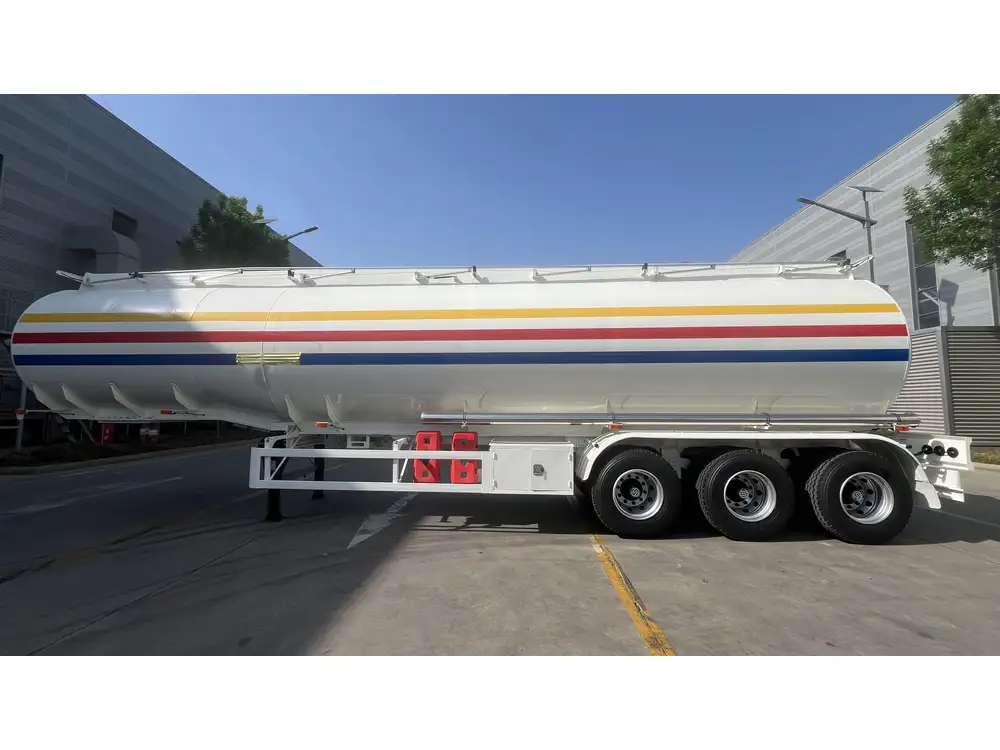When it comes to semi-trailers, understanding their weights is a critical consideration for manufacturers, operators, and logistics managers alike. The 48-foot semi-trailer is a preferred choice in the freight industry due to its versatility and capacity. This article delves into the specifics of how much a 48-foot semi-trailer weighs, the variances in weight due to different configurations, and the implications for hauling, regulations, and operational efficiency.
Overview of Semi-Trailer Dimensions and Types
| Semi-Trailer Type | Total Length | Average Weight (Empty) | Average Payload Capacity |
|---|---|---|---|
| Standard 48-Foot Flatbed | 48 feet | 10,000 – 12,000 lbs | 48,000 – 52,000 lbs |
| 48-Foot Dry Van | 48 feet | 12,000 – 15,000 lbs | 45,000 – 50,000 lbs |
| 48-Foot Refrigerated | 48 feet | 14,000 – 16,000 lbs | 42,000 – 46,000 lbs |
| 48-Foot Lowboy | 48 feet | 14,000 – 18,000 lbs | 40,000 – 44,000 lbs |
Types of Trailers and Their Weight Implications
The weight of a 48-foot semi-trailer can vary significantly based on its design and intended use. There are several types of 48-foot semi-trailers, each with its own weight range:
Flatbed Trailers: Ideal for transporting oversized loads that do not need protection from the elements. Their lightweight structure allows for maximum payload, keeping the trailer weight low.
Dry Van Trailers: Enclosed trailers that shield cargo from the weather. Typically heavier due to reinforced walls and floors.
Refrigerated Trailers (Reefers): These trailers have an insulated body and a refrigeration unit for perishable goods, increasing their weight but enhancing their utility.
Lowboy Trailers: Designed for transporting heavy equipment, they feature a lower deck height for stability. Their weight can be higher than standard trailers due to added structural support.
Each type serves various industries including agriculture, construction, and food services. Understanding the weight specifications of each helps ensure compliance with weight regulations and optimize load capacities.

The Weight Variables of 48-Foot Semi-Trailers
Several factors can influence the weight of a 48-foot semi-trailer:
1. Construction Materials
The choice of materials significantly affects the overall weight. Modern trailers often use lightweight materials such as aluminum, which can reduce empty weight. Conversely, steel frames, while stronger, contribute to a heavier base weight.
2. Axle Configuration
Customized axle configurations, such as tandem or tri-axle systems, not only expand payload capacity but also variate weight distribution. Generally, more axles increase the trailer’s total weight, but they can allow for heavier cargo distribution and compliance with road regulations.
| Axle Configuration | Average Trailer Weight |
|---|---|
| Single Axle | 10,000 – 12,000 lbs |
| Tandem Axle | 12,000 – 15,000 lbs |
| Tri-Axle | 14,000 – 18,000 lbs |

3. Trailer Options and Customizations
Features such as additional storage compartments, aerodynamic designs, or heavy-duty flooring can lead to variation in weight. Customizing a trailer for specific needs could weigh more, but may provide enhanced utility or durability in operations.
4. Regulatory Considerations
Understanding weight limits set by the Department of Transportation (DOT) is crucial. For example, the Federal Bridge Formula defines how much weight can be safely apportioned on axles based on trailer configuration and vehicle dimensions.
Practical Implications of Trailer Weight
Understanding the weight of a 48-foot semi-trailer is not just a matter of curiosity — it has real-world implications for operators and logistics managers. Here are key considerations:

Cost-Efficiency in Hauling
Determining the optimal weight capacity for various loads can impact fuel efficiency and operational costs. Heavier trailers can mean higher fuel consumption rates, making it vital to recognize and manage weight to ensure cost-effective hauling.
Compliance with Regulations
Failure to comply with weight regulations can result in fines and legal actions. Knowing the weight limits for each axle configuration helps haulage companies plan loads effectively, avoiding penalties while maximizing operational efficiency.
Safety Considerations
Balancing weight distribution directly correlates to the safety of the vehicle during transport. Overloading or uneven weight distribution can lead to reduced braking effectiveness and potential accidents. Regular weight checks have become paramount in ensuring safety in operations.

Impacts on Maintenance
Heavier trailers ultimately experience increased wear and tear. This necessitates the consideration of maintenance costs versus the payload capabilities a trailer can offer. Regular checks and balances on trailer weight can have significant implications for longevity and performance.
How to Accurately Determine the Weight of Your Semi-Trailer
1. Manufacturer Specifications
Review the weight specifications provided by the semi-trailer manufacturer. Most manufacturers provide unladen weight (empty weight) alongside maximum payload capacities, which serve as base figures for identifying operational limits.

2. Weigh Stations
Utilizing weigh stations located on major transportation routes allows drivers to check the weight of loaded trailers. This is especially valuable for long hauls, ensuring compliance with weight regulations.
3. On-Site Scales
For businesses operating within a fixed location, installing on-site scales can offer continual insight into trailer weights. This not only assists in regulation compliance but can help optimize loading processes.
4. Electronic Weighing Systems
Advanced technological solutions such as load cell systems integrated into trailer suspensions can provide real-time data on weight distribution, allowing for immediate adjustments and enhanced compliance.

Conclusion: Navigate the Weight of 48-Foot Semi-Trailers Effectively
In summary, comprehending the weight dynamics of a 48-foot semi-trailer proves essential for successful operations within the logistics and transportation industries. The weight range for these trailers can differ based on type, materials, axle configurations, and customizations. Understanding these variables allows for optimal cost-management strategies and safety considerations while navigating regulatory frameworks.
Essential Takeaways for Operators
- Determine your specific needs based on industry and load requirements.
- Accurately assess and manage the weight of the semi-trailer regularly.
- Stay updated on regulations and adjust operations to ensure compliance.
- Invest in innovative weighing technologies for efficiency.
By meticulously considering these factors, manufacturers, operators, and logistics coordinators can enhance their operational effectiveness, ensuring safety and reliability in transporting goods across the bustling freight landscape.



